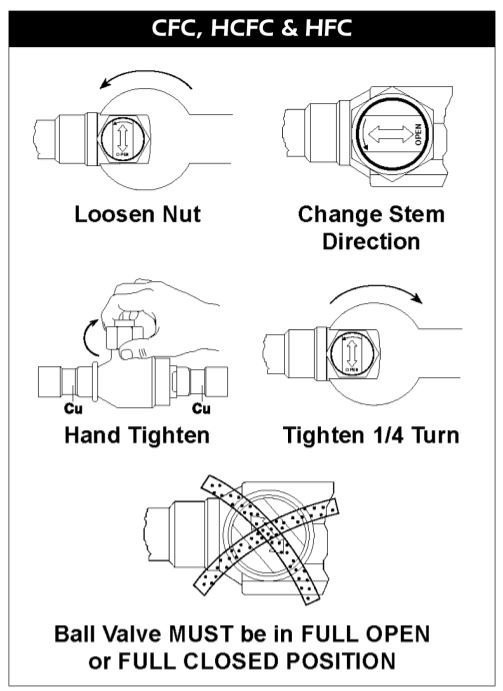Get Tech Tips
Subscribe to free tech tips.
Crankcase Heaters and Single-Pole Contactors

We keep two-pole, 40-amp 24v coil contactors on all of our vans. They are versatile and reliable, and you can replace most residential A/C contactors with them.
There are a few things to watch for, though, especially when you have a crankcase heater. Many brands power the crankcase heater constantly and shut it on and off with a thermostat, often mounted on the discharge line (looking at you, Trane). When you replace a single pole with a two-pole contactor in this type, you need to make sure you connect BOTH sides of the crankcase circuit across the L1 and L2 line side of the contactor to ensure the heater can function when the compressor is off.
Want to know something even more confusing than that? Look at the diagram at the top. Focus on the top left part of the diagram where the crankcase heater is located…
How do you think that works? I will wait while you think it through. Don't cheat. Look at it.
This is a common Carrier heat pump crankcase heater configuration.
You notice that one side of the heater goes to L1 line side Terminal 1, and the other side is going to L1 load side terminal 2.
So, the crankcase heater ONLY functions when the compressor contactor is OPEN. Even then, it does so by back-feeding through the compressor common and back through the run winding of the compressor to the constant powered L2 side of the contactor.
This means if you replace this contactor wire for wire with a two-pole contactor, the crankcase heater will never work. You must put the compressor run wire (yellow) to the bottom of the contactor (L2 line side) instead of the top, as it should be if you want the crankcase heater to function in this situation…
All of this is to remind you: DON'T BE A PARTS CHANGER! Know what you are replacing, why you are replacing it, and what each wire and component actually does.
—Bryan











Comments
I’ve bee telling people this for years. They look at me like I’m an idiot and keep on putting 2 pole contactors in place of single pole contactors with out making the change
I’ve bee telling people this for years. They look at me like I’m an idiot and keep on putting 2 pole contactors in place of single pole contactors with out making the change
Good info
Good info
What is the advantage for keeping the compressor coil in the active circuit? Only to energise the crankcase heater?
In case of short circuit between cch and the unit earth, the comp winding, being thinnest in the circuit, would it not blow like a fuse?
What is the advantage for keeping the compressor coil in the active circuit? Only to energise the crankcase heater?
In case of short circuit between cch and the unit earth, the comp winding, being thinnest in the circuit, would it not blow like a fuse?
That’s why you need to have the right size fuses, so that they blow up first.
The problem with putting a 2 pole contactor comes because a lot of techs when they see a 2 pole contactor assume there is nothing energized, when you have the Run leg of the compressor energized. I prefer to put a relay that energizes the crankcase heater when the contactor is not energized.
That’s why you need to have the right size fuses, so that they blow up first.
The problem with putting a 2 pole contactor comes because a lot of techs when they see a 2 pole contactor assume there is nothing energized, when you have the Run leg of the compressor energized. I prefer to put a relay that energizes the crankcase heater when the contactor is not energized.
You see those little asterisk by the crankcase heater that means it is optional. I cases where you don’t have the crankcase heater it is using the compressor winding and cap to act like a crankcase heater.
You see those little asterisk by the crankcase heater that means it is optional. I cases where you don’t have the crankcase heater it is using the compressor winding and cap to act like a crankcase heater.
To leave a comment, you need to log in.
Log In